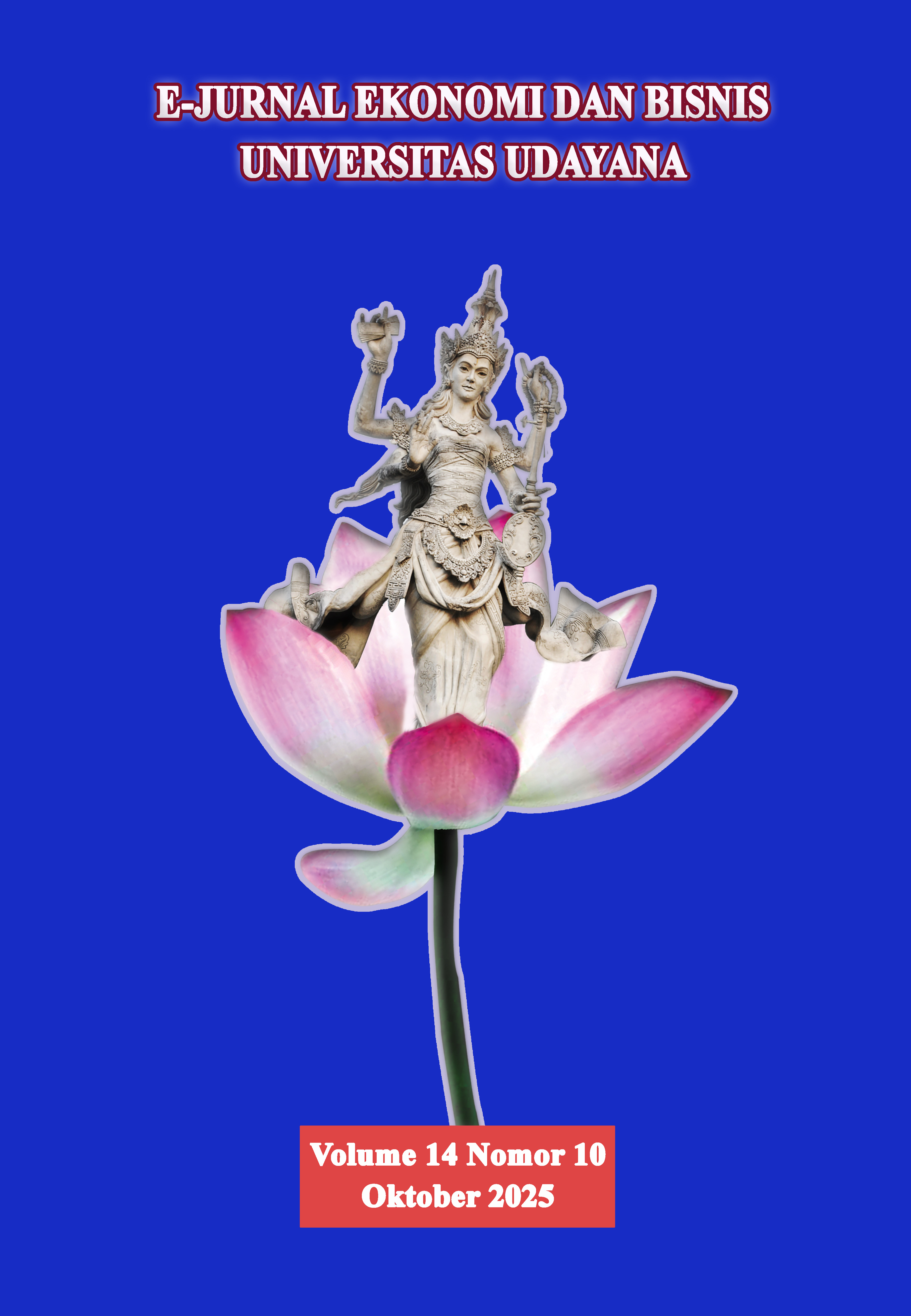PENGARUH LEVERAGE TERHADAP RISIKO FINANCIAL DISTRESS: PENDEKATAN ALTMAN, OHLSON DAN ZMIJEWSKI
DOI:
https://doi.org/10.24843/EEB.2025.v14.i10.p03Keywords:
Leverage, Financial Distres, Pecking Order Theory, Struktur ModalAbstract
Penelitian ini mengkaji pengaruh struktur modal terhadap kemungkinan terjadinya financial distress pada perusahaan non-keuangan yang terdaftar di Bursa Efek Indonesia (BEI) selama periode 2011 hingga 2023. Pecking order theory menjadi dasar analisis dalam mengamati bagaimana ketergantungan perusahaan terhadap pembiayaan utang dapat meningkatkan risiko kebangkrutan. Financial distress tercermin melalui tiga model pengukuran yaitu Altman Z-Score, Ohlson O-Score dan Zmijewski Score, sehingga memberikan gambaran yang lebih komprehensif dan multidimensional. Hasil penelitian menunjukkan bahwa capital structure berpengaruh positif dan signifikan terhadap financial distress dalam seluruh model, yang menunjukan bahwa perusahaan dengan tingkat leverage yang tinggi lebih rentan terhadap tekanan keuangan, terutama di pasar berkembang yang menghadapi keterbatasan dana internal. Selain itu, firm size dan profitability terbukti menurunkan kemungkinan distress, sementara variabel growth opportunities dan dividend payout policies menunjukkan hasil yang bergantung pada model yang digunakan. Temuan ini menegaskan pentingnya keputusan struktur modal dalam mengelola ketahanan keuangan perusahaan dan memberikan implikasi kebijakan yang relevan bagi manajer dan pemangku kepentingan.
This study investigates the effect of capital structure, particularly leverage, on the likelihood of financial distress among non-financial firms listed on the Indonesia Stock Exchange (IDX) from 2011 to 2023. The analysis is grounded in the pecking order theory, which explains how firms’ reliance on debt financing may elevate the risk of bankruptcy. Financial distress is captured through three measurement models—Altman Z-Score, Ohlson O-Score, and Zmijewski Score—offering a more comprehensive and multidimensional assessment. Our empirical findings reveal that leverage is positively and significantly associated with financial distress across all models. This indicates that firms with higher debt levels are more vulnerable to financial instability, particularly in markets with limited access to internal funding. Additionally, we find that firm size and profitability reduce the likelihood of distress, while the effects of growth opportunities and dividend payout policies are model-dependent. The results confirm the relevance of capital structure decisions in managing financial vulnerability and offer important implications for corporate financial management in emerging markets.
Downloads
Published
Issue
Section
License
Copyright (c) 2025 Gun Gun Budiarsyah (Author)

This work is licensed under a Creative Commons Attribution 4.0 International License.














